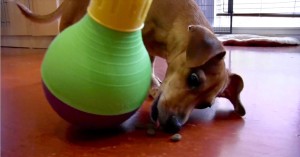Michael Baugh CDBC CPDT-KSA
What does it mean when someone says they are a certified dog professional dog trainer? Specifically, what do all those letters after a trainer’s name mean?
First, this won’t be a complete list of all the certifications and letters. There are too many. I’m going to focus on the broader question and then the specific certifications our trainers have.
Let’s start with the bad news. Anyone can call themselves a certified dog trainer. There are no rules or laws. We can even call ourselves a dog behaviorist if we want to (see I kind of just did it). No rules. Sally Q can go to Joe Bob’s school for dog trainers, get a slip of paper (or a PDF emailed to her) and say “Boom, I’m certified.” That’s the ugly truth of dog training. We are 100% unregulated. Your vet tech needs a license. So does your hairdresser and your insurance guy. Dog trainers? Nope. Not us.
Most trainers these days pay more attention to independent certifications than they do to certificates issued by dog training schools. Karen Pryor Academy is a school. It issues the KPA-CTP (Karen Pryor Academy Certified Training Partner). I’ve got one of those. The San Francisco SPCA Academy for Dog Trainers issued it’s own certificate. Others do, too. The certificate is only as valuable as the school that printed it and it’s only a reflection of what that school teaches (think: diploma).
Independent certifications are often more rigorous and objective. They are awarded by testing bodies rather than teaching institutions.
 The Certification Council for Professional Dog Trainers (CCPDT) issues the Certified Professional Dog Trainer (CPDT) certifications. There is the knowledge assessed (KA) distinction and the knowledge and skills assessed (KSA) distinction. The latter means the certificant’s actual hands-on skills as a trainer have been graded.
The Certification Council for Professional Dog Trainers (CCPDT) issues the Certified Professional Dog Trainer (CPDT) certifications. There is the knowledge assessed (KA) distinction and the knowledge and skills assessed (KSA) distinction. The latter means the certificant’s actual hands-on skills as a trainer have been graded.
The CCPDT does not teach classes in dog training.
Earning their certification requires:
- 300 hours of experience
- Recommendation from a veterinarian, behaviorist, or Certified Dog Behavior Consultant (more on what this is next)
- Passing a 200 question multiple choice test covering – instruction skills, animal husbandry, ethology, learning theory, and training equipment.
The International Association of Animal Behavior Consultants (IAABC) issues the Certified Dog Behavior Consultant (CDBC) and Certified Cat Behavior Consultant (CCBC) certifications. They also issue other certifications not directly related to this blog piece.
The IAABC does offer courses and webinars on training and behavior but those are not required to earn certification.
Earning a CDBC or a CCBC is quite vigorous work. It requires:
- 500 hours of experience
- Minimum 400 hours of coursework, seminars, or mentorships
- Familiarity with significant behavior issues including aggression
- Three professional letters of recommendation
- Passing an extensive exam that includes definitions of terms and concepts, analysis of behavior case scenarios, and actual case studies from the applicant. Earning my CDBC was still the hardest and most satisfying thing I’ve ever done in my professional life.
Veterinary Behaviorists are different from trainers and behavior consultants. Many (like our own Dr. Lore Haug) are also excellent trainers. However, veterinary behaviorists have the distinction of being a Doctor of Veterinary Medicine (DVM) and a Diplomat of the American College of Veterinary Behaviorists (DACVB). They are also licensed by the state. Most folks don’t need to take their dog to a veterinary behaviorist, though we do refer clients to Dr. Haug and we also work with many of her patients.
Non-veterinary Behaviorists are often academics with a masters degree or PhD. They may or may not have a specialty in (or even an interest in) hands-on training or the practical application of behavior interventions. And remember, the terms behaviorist, animal behaviorist, and dog behaviorist are still unregulated. Anyone can use them, and a lot of those folks shouldn’t.
Michael’s Dogs / Michael Baugh is a f Certified Professional Dog Trainers and Certified Dog Behavior Consultants. Though many refer to me as behaviorists, I think of myself as a practical trainer and educator with a specialty in behavior change. Okay, ditch the fancy talk. Just call me a dog aggression expert. I help people who have pets with significant behavior problems. Maybe I’m the ones you call when others have failed. Experience, education and certifications are so important. More important, though, is a kind human being who understands what you’re going through, someone who can help you weed through the confusion and unpredictability, someone who will listen carefully without judging you. Someone who won’t criticize but can and will help. And yeah, I’ve got some letters after my name to back that up. That helps, too.
Michael Baugh leads Michael’s Dogs Behavior Group in Houston TX.

